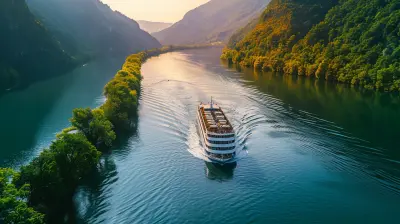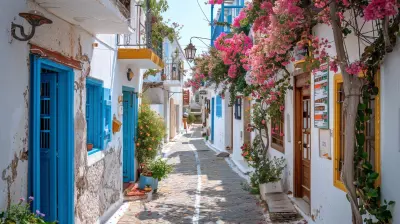Exploring the Wonders of Iceland: Geysers, Glaciers, and Waterfalls
30 August 2025
If you’ve ever dreamed of stepping into a fantasy world — the kind where nature runs wild and the landscapes seem too surreal to be real — Iceland should be at the top of your travel list. This Nordic island is like Earth’s greatest hits album, bursting with dramatic geysers, ancient glaciers, and thunderous waterfalls that’ll leave you speechless (and probably a little wet). But Iceland’s magic isn’t just in its scenic views — it’s in the feeling you get when you’re standing in the middle of it all, breathing in crisp Arctic air while your eyes feast on nature’s rawest beauty.
Let’s dive into the adventure of experiencing Iceland’s wonders up close and personal — one glacial gust, geyser eruption, and waterfall mist at a time.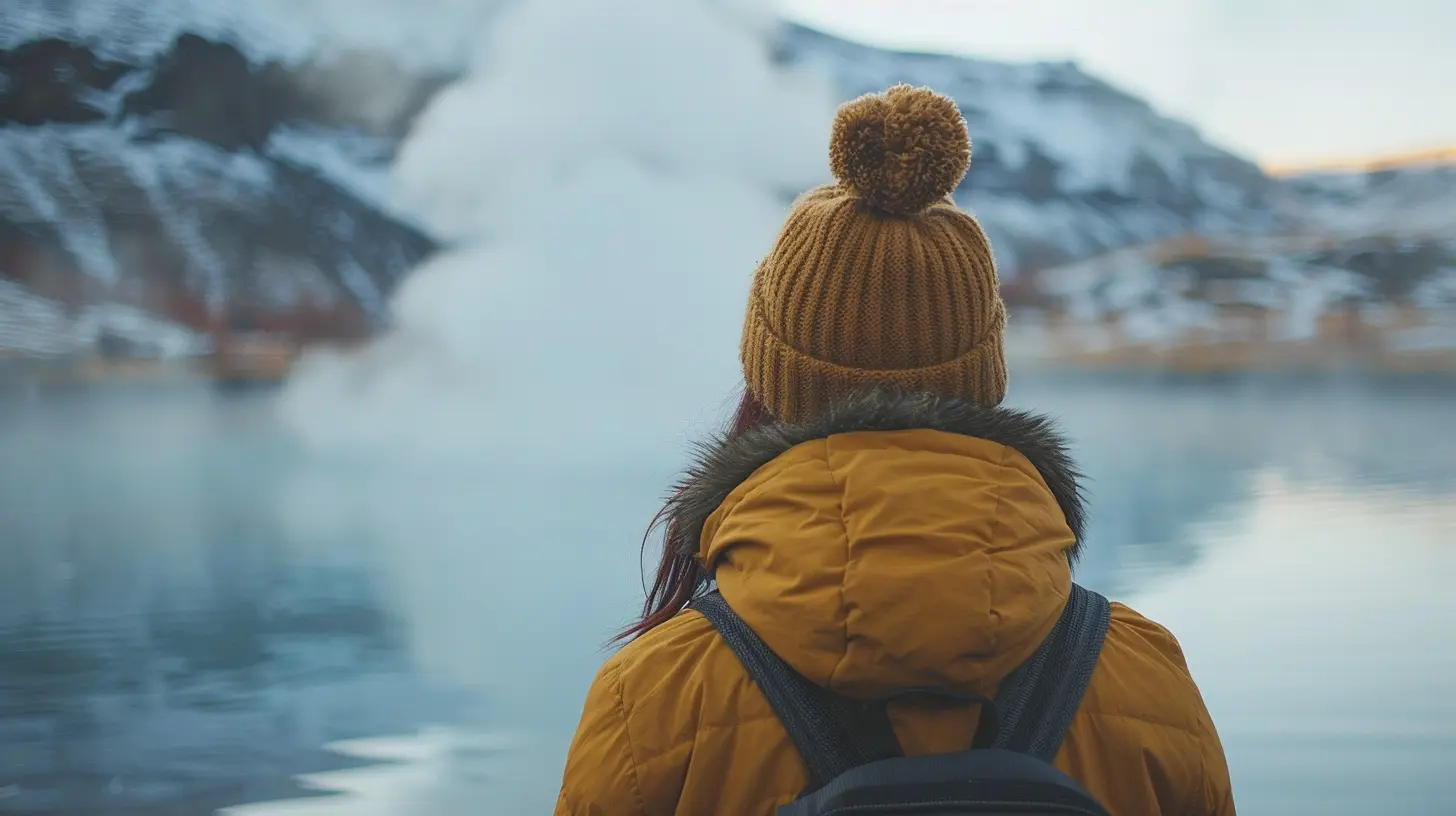
Why Iceland Is a Nature Lover’s Dream
Iceland isn’t just another country. It’s like Mother Nature’s playground. With only about 375,000 people spread across its dramatic terrain, Iceland offers an untouched, almost sacred connection to the elements. Whether you’re chasing waterfalls or hiking across vast glaciers, Iceland makes you feel like you're walking through a living postcard — except it's real, and you're a part of it.To truly appreciate what makes this island so special, it helps to break its appeal into three absolutely jaw-dropping categories: geysers, glaciers, and waterfalls. Each one offers an unforgettable experience.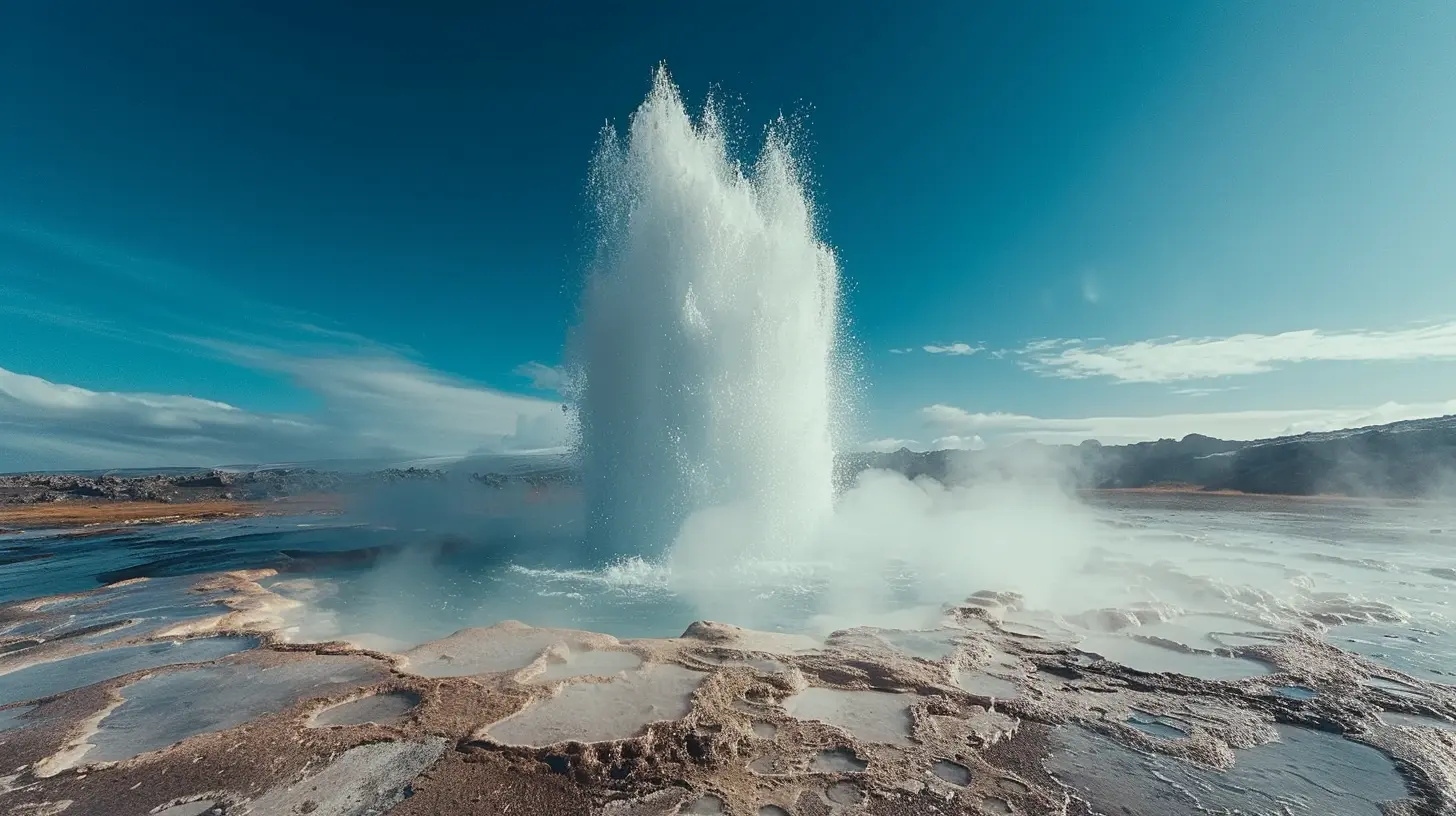
Geysers: Earth’s Fiery Surprises
Imagine standing on solid ground, and suddenly — BOOM! — a pillar of boiling water shoots skyward with the roar of a dragon. That’s a geyser for you. Iceland sits on a hotbed of geothermal activity thanks to its location on the Mid-Atlantic Ridge. In simpler terms? The Earth is literally bubbling underneath your feet.The Great Geysir — The Original Showstopper
The original “geysir” (yes, the term comes from Iceland!) is located in the Haukadalur Valley. While the original Geysir isn’t as active nowadays, its lively neighbor Strokkur goes off like clockwork every 5–10 minutes — shooting boiling water up to 30 meters into the air. It’s like nature’s version of a fountain show in Vegas, but a whole lot cooler (or hotter?).Other Geothermal Attractions
While Strokkur may steal the show, the entire area around it is filled with bubbling mud pots, steaming vents, and colorful mineral-rich soils. Walking through feels like you’ve landed on another planet — maybe Mars with more steam.If you’re into relaxing too, don’t miss out on geothermal spas like the Blue Lagoon or the less-crowded Secret Lagoon. Soaking in naturally heated waters surrounded by lava fields? Yes, please.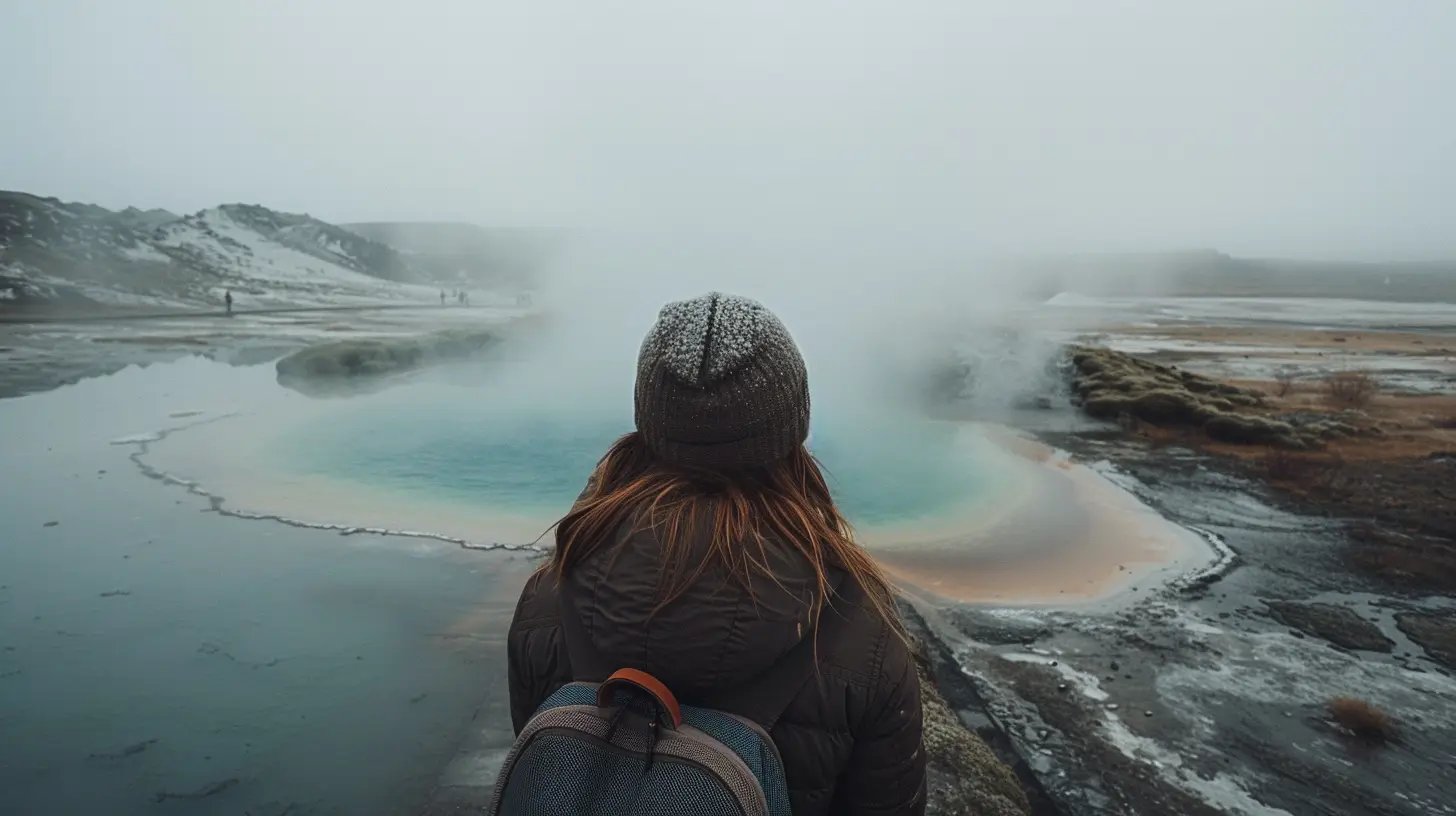
Glaciers: Frozen Giants of the North
Now, flip the temperature switch — we’re going from boiling-hot geysers to icy-blue glaciers. Believe it or not, over 10% of Iceland is covered by glaciers. These ancient ice formations are time capsules, preserving stories from thousands of years ago.Vatnajökull — Europe’s Biggest Glacier
First up, Vatnajökull, Europe’s largest glacier by volume. It’s a massive white beast, covering about 8% of Iceland. You can’t fully grasp its size until you see it stretch endlessly across the horizon — it’s like nature’s version of a white ocean.There are tons of ways to experience Vatnajökull:
- Glacier hiking: Strap on some crampons and explore icy caves and ridges.
- Ice climbing: For the bold and fearless, scaling ice walls is a thrill like no other.
- Snowmobiling: Feel like James Bond as you zoom across a frozen expanse.
The Magical Ice Caves
One of the most otherworldly things you can do in Iceland is explore its seasonal ice caves. These crystal-blue caverns are carved by meltwater and change every year. Walking inside one feels like entering Superman’s Fortress of Solitude, minus the Kryptonite.The best time to visit these caves is from November through March when they’re safest and most stable.
Waterfalls: Nature’s Thunderous Artwork
If Iceland were a movie, waterfalls would be its soundtrack — bold, dramatic, and utterly unforgettable. With over 10,000 waterfalls (yep, you read that right), Iceland has more cascading beauty than you could possibly see in one trip. But there are definitely a few must-sees.Gullfoss – The Golden Waterfall
Located along the famous Golden Circle, Gullfoss is one of Iceland’s most iconic waterfalls. It’s not just the size or power that impresses — it’s how the water plunges in two stages into a rugged canyon, creating rainbows when the sun hits just right. Standing nearby, you hear the endless roar and feel a fine mist kiss your skin. It’s pure magic.Skógafoss – The Photographer’s Dream
Heading south, Skógafoss is a 60-meter high and 25-meter wide stunner. You can walk right up to the base (prepare to get wet!) or climb the 500+ steps to the top for an epic view. If you're lucky, you might catch a double rainbow — always Insta-worthy.Seljalandsfoss – Walk Behind a Waterfall
Ever wanted to walk behind a curtain of water? At Seljalandsfoss, you can do just that. There’s a pathway that loops behind the falls, and it’s genuinely one of the coolest things to experience — especially at sunset. Just be careful; it's slippery!Dettifoss – The Most Powerful in Europe
Located in North Iceland, Dettifoss is known as Europe’s most powerful waterfall. Standing near it is like hearing the Earth scream — a constant, deafening rush of water that makes you feel tiny in the best possible way.The Ultimate Iceland Adventure: Putting It All Together
You could easily focus your entire trip on just geysers, glaciers, or waterfalls. But putting them all together? That’s the real magic of Iceland. Fortunately, you don’t have to be a hardcore backpacker to experience it all. With a bit of planning, even a weeklong road trip can squeeze in the major highlights.The Golden Circle
This is the perfect intro for first-timers. In just a day, you can hit:- Thingvellir National Park (where tectonic plates meet)
- Geysir Geothermal Area
- Gullfoss Waterfall
It’s like Iceland 101 — simple, stunning, and super accessible.
The South Coast
If you have more time, continue down the south coast:- Seljalandsfoss & Skógafoss
- Reynisfjara Black Sand Beach
- Vatnajökull National Park (for glacier hikes and ice caves)
You’ll cross lava fields, black beaches, and moss-covered cliffs along the way — all part of the Icelandic charm.
The Ring Road
Feeling adventurous? Rent a car and do the full Ring Road — Iceland’s Route 1 that circles the entire island. It takes around 8–10 days and includes some of the lesser-known but equally mind-blowing sights found in the Eastfjords and North Iceland.Tips for Your Iceland Trip
Let’s be real — Iceland isn’t the cheapest destination. But it’s so spectacular that it’s worth every krona. To help you make the most of it, here are a few travel tips:- Pack for all weather: Seriously, you can get sun, snow, and rain in a single hour.
- Rent a 4x4 in winter: Snowy roads are no joke.
- Stock up on snacks: Food can be pricey, especially in remote areas.
- Bring a reusable water bottle: Icelandic tap water is some of the cleanest in the world.
- Book activities in advance, especially in peak season (June–August).
And don’t forget your camera — you’ll want it handy every second.
When’s the Best Time to Visit Iceland?
It really depends on what you’re after:- Summer (June–August): Midnight sun, green landscapes, and easy travel conditions.
- Winter (November–March): Ice caves, Northern Lights, and fewer crowds.
- Shoulder Seasons (May/September): A perfect balance of beauty and calm.
Each season has its perks, so there’s really no wrong time to go — just different kinds of awesome.
Final Thoughts: Iceland Is an Experience, Not Just a Destination
At the end of the day, Iceland isn’t someplace you just “see” — it’s something you feel. Whether it's the spray of a mighty waterfall, the crackle of ice beneath your boots, or the first puff of steam from a geyser about to blow, every moment is brimming with wonder.So pack your sense of adventure (and a good rain jacket), and get ready to make memories that’ll stick with you forever. After all, how often do you get the chance to witness the Earth’s greatest natural show, front and center?
all images in this post were generated using AI tools
Category:
Travel ItinerariesAuthor:

Claire Franklin
Discussion
rate this article
2 comments
Heidi Sharp
Iceland's natural beauty is truly breathtaking. Every geyser, glacier, and waterfall tells a story that lingers long after you leave. Pure magic!
November 16, 2025 at 4:38 AM

Claire Franklin
Thank you! I'm glad you feel the magic of Iceland's stunning landscapes. Each element truly has its own unique story to share!
Victor Warner
Iceland’s stunning landscapes truly captivated my spirit. The powerful geysers, majestic glaciers, and breathtaking waterfalls make for an unforgettable experience. Each natural wonder tells a story, inviting exploration and reflection. It’s a reminder of nature’s beauty and raw power—an adventure that lingers long after you leave.
August 31, 2025 at 3:04 PM

Claire Franklin
Thank you! I'm glad the landscapes resonated with you. Iceland's natural wonders indeed inspire awe and reflection, creating lasting memories.
